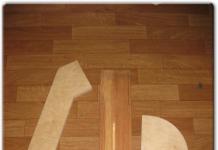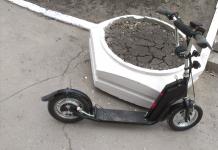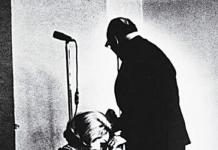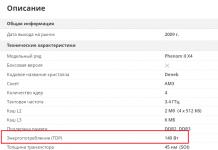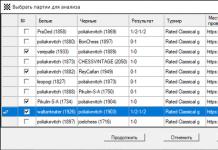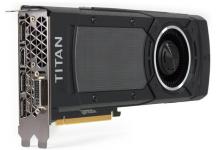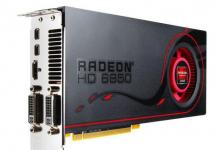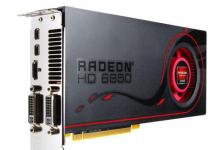Personal eye protection equipment (PPE (g)) is safety glasses, masks, shields and helmets. They must protect the organs of vision from the effects of negative factors and meet certain standards. In Russia, this is GOST R 12.4.013-97.
It is valid for all PPE (g) from the impact of negative factors that arise in the industrial sector, research laboratories, educational institutions, everyday life, etc. and can harm the organs of vision.
GOST R 12.4.013-97 does not apply to PPE (g) from nuclear radiation, X-rays, low-temperature infrared and radio radiation, laser. And also for sunglasses and glasses for a computer (and it's a pity, sometimes, their price is such that I would like to be firmly confident in their quality).
The standard sets:
Basic Requirements
PPE (g) must be free of any defects that could cause discomfort or harm during use (sharp edges, protruding parts, etc.). They should not cause allergic reactions when in contact with the skin (it would be nice if this also applies to other optics - for a computer, corrective, etc.). The width of the headband must be at least 1 cm at the points of contact with the head. The tape itself must be self-adjusting or adjustable.
Also, basic standards are provided for parameters such as:
- line of sight;
- optical parameters and characteristics of spectacle, cover lenses and light filters;
- the quality of the material and surface of the spectacle lens;
- minimum strength of cover slips and light filters;
- increased strength of lenses and complete PPE (g);
- resistance to aging and external influences, corrosion and fire.
Special Requirements
GOST, defining resistance to optical radiation, high-speed particles, molten metals and hot solids. As well as side protection and protection from drops and splashes of various liquids, gases, fine and coarse aerosols (dust); from direct radiation of an electric arc and other thermal processes.
Remember to make sure you have reliable power outlets in the room. So Legrand Valena sockets have all the necessary parameters and indicators for safe operation in any room. You can see all the necessary data on the official website.
Additional requirements
Applied to PPE (g), cover and spectacle lenses with a filter coating. Set standards for resistance to fine aerosols, fogging, high-velocity particles, and more.
The price of eye protection products is not regulated by standards. They can also be obtained free of charge if they are issued at work (however, employers also like to save money and do not always buy high-quality products). If you need to purchase them yourself, first of all we pay attention not to the cost, but to the properties and quality. And, yes, too cheap glasses, even for a computer, even for gas welding, are unlikely to be good.
Eye protection functions
 The main function of PPE (g) according to GOST is protection against such types of hazards as:
The main function of PPE (g) according to GOST is protection against such types of hazards as:
- Mechanical and exposure to harsh chemicals.
- Optical radiation.
- Hot solids and molten metal particles.
- Drops and splashes of caustic and non-caustic liquids.
- Coarse aerosols (dust).
- Gases and fine aerosols.
- Heat radiation.
- A combination of these factors.
The design of PPE (g) is different: closed, open goggles with and without side protection, face shields and screens. There are also many types of lenses: colorless, hardened, organic (plastic), laminated and chemically resistant. They can be with or without diopters, they can be applied with various coatings that improve and expand the protective properties.
By the way, glasses for a computer (also a kind of STZ (g)), or rather, their lenses are also covered with different coatings (the better, the higher the price). And they can be made of both glass and plastic. And, of course, they come with or without diopters.
Types of eye protection
 Safety glasses are of different types:
Safety glasses are of different types:
- Open glasses (O).
- Open hinged (OO).
- Closed with direct (ZP) and indirect ventilation (ZN).
- Closed sealed (G).
- Mounted (H).
- Visor (K)
- Protective lorgnette (L).
Depending on the type, according to GOST, PPE (g) with transparent glasses must protect the eyes from the front and sides (if they are closed, from above and below) from the effects of solid particles; splashing liquids; corrosive gases, vapors, etc. Light filters must protect from glare, ultraviolet radiation and infrared radiation (coatings can also be applied to the lenses of computer glasses that protect against these factors).
The name of the type of glasses using their designations in accordance with GOST is established when developing new types. If the glasses use double glazing (glass and light filter), then the letter "D" is added to the marking. For example: double open points - AP, etc. when using an adjustable jumper, the letter "P" is added: closed glasses with indirect ventilation and an adjustable jumper - ZNR.
What should the manufacturer indicate?
 Not only the price should be indicated, but also in accordance with GOST:
Not only the price should be indicated, but also in accordance with GOST:
- Manufacturer's name and address.
- Model designation and this standard.
- Instructions for storage, use and care.
- Cleaning and disinfection rules.
- Scope of application, methods of protection and performance.
- Description of the complete set with assembly instructions appendix.
- Shelf life.
- Type of packaging for transportation.
- The importance of markings on frames or lenses.
In addition, the manufacturer, according to GOST, must warn, if necessary, that: the lenses are not intended for long-term use; allergic reactions are possible; do not work with scratched or damaged glasses. And also that eye protection, worn over corrective optics, can transmit the impact of flying particles, etc.
Have you noticed that when buying any glasses (for a computer, corrective, sun and protective), we very rarely ask for any documents. We just take the sellers' word and buy what we like visually, or because the price is low. And most often we do not even think about where, by whom and from what the optics were produced, whether it complies with GOST. Why, though? After all, we subconsciously know this (China provides us with everything we need).
One of the most popular PPE manufacturers (g)
 One of the world leaders in the production of protective optics is the German company Uvex. Its products provide maximum eye protection and comfortable wearing. It takes into account everything - the distance between the centers of the pupils, the shape of the head, face. A wide range allows you to choose a coating that is suitable for various working conditions.
One of the world leaders in the production of protective optics is the German company Uvex. Its products provide maximum eye protection and comfortable wearing. It takes into account everything - the distance between the centers of the pupils, the shape of the head, face. A wide range allows you to choose a coating that is suitable for various working conditions.
The price of PPE (g) is not small, but it is better to buy German quality for 1 thousand rubles and use glasses for a long time than to throw away Chinese consumer goods (and with it money) in 1-2 months. By the way, the company also produces sun-protection, ski and sports optics. True, there are no computer glasses in the assortment yet.
Uvex safety glasses have such advantages as:
- Quick change of lenses.
- Light weight.
- High optical quality (class 1 according to EN 166 - European standard).
- Impact resistance.
They use lenses of different colors: clear, brown, yellow, orange, gray, blue and green. All of them have common properties - protection of eyes from flying particles and ultraviolet radiation, as well as individual ones. So, brown and amber color and infrared radiation, improve contrast, therefore they are suitable for use in poor visibility conditions.
Orange gives a relaxing effect, gray protects from too bright light without color distortion. Blue lenses have a calming effect and are recommended for work requiring increased concentration and attention. Green and gray (for gas welders) perfectly absorb radiation from welding.
Uvex safety glasses have different coatings (the price of the product depends on this):
- Supravision NCH. Resistant to scratches, chemicals and fogging, easy cleaning.
- Optidur NCH. Resistant to scratches, chemicals and oily substances.
- Variomatic ("chameleon"). In the light they darken in 10 seconds, in the dark they brighten in 30 seconds. Suitable for those who often enter the premises from the street and vice versa.
- Infradur PLUS. Protection against ultraviolet and infrared radiation, bright light. Resistant to mechanical stress and splashes of molten metals.
- Supravision extreme. Increased resistance to fogging. Good for high humidity and condensation environments.
- Supravision performance. Ideal for high humidity environments and frequent lens cleaning.
- Supravision HC-AF. Resistant to scratches and fogging. 100% UV protection.
- Optidur 4C PLUS. Resistant to scratches and fogging. 100% UV protection. Plus anti-static.
- Maximum scratch resistance and UV protection.
- Hi-res. Crystal clarity for clear vision.
Additional functions (the price also depends on them): adjustable temples, pads at their ends, the design allows you to comfortably wear corrective glasses, ease of maintenance.
We offer you to watch the review of Uvex safety glasses (video):
If you want to protect your eyes, pay attention only to high-quality optics, be it protective or corrective. Don't be confused by the low price - saving isn't always a joy. Be prudent, do not forget that there is GOST!
If you want to add something or express your opinion about the article, write reviews and comments.
According to statistics, the cause of many industrial injuries is the absence or violation of personal protective equipment.
It is especially scary when it comes to the eyes, the main human organ for the perception of the surrounding world, in this context.
Therefore, eye protection at work is an important task to prevent the effects of occupational factors on human health.
What do you need to protect your eyes from?
The most common cause of eye injuries in the production process can be flying fragments of solids, splashes of acids, alkalis. Lesions can also occur due to thermal burns, infrared or ultraviolet rays.
For enterprises whose activities are associated with a risk to eyesight, a special set of safety rules has been developed, which implies the mandatory wearing of protective glasses, shields, masks.
What are the types of eye protection at work?
Each area of production has its own threats to vision, therefore glasses, shields, masks are designed with an orientation to a specific type of irritant. For example, for welders, metalworkers, a mask with the ability of welding lenses to completely filter out harmful ultraviolet and infrared radiation is important, ensuring complete eye protection. For construction work, glasses with a foam pad around the circumference of the frame are more suitable. Anti-fog goggles are recommended when working in condensation areas.
All PPE for eye protection at work can be divided into open and closed.
- Open ones protect the eyes from the front and sides, but above and below the safety factor is practically zero. Good ventilation is one of the advantages.
- Closed - fit snugly to the face, reliably protect the visual organs from all sides, reliably protecting the eyes from splashes of metal, dust particles, abrasives, paint, varnishes, and chemicals. Among the shortcomings, it is worth noting the relatively large weight of the structure, the almost complete lack of ventilation and discomfort when worn.
Lenses are key when choosing glasses. Modern manufacturers produce them from different materials: plastic, polycarbonate, acetate. It is important to correctly approach the choice, assessing both the degree of protection and the possibility of replacement.
How to choose?

There are a number of important factors to consider when choosing PPE.
- Size and convenience. Safety glasses must necessarily have side protection (side shields or frame of an adjacent shape), which is capable of completely covering the bridge of the nose and the area around the eyes.
- The weight. Lightweight models can be worn full time.
- Design features. Some models are equipped with softening pads made of soft rubber or elastomers at pressure points (in the area of the nose, temples).
- The degree of shading.
At Komplekt M. presents eye protection in production for any work. Our consultants will help you to buy open goggles, to choose the optimal models of shields in our catalog. We work only with leading manufacturers, so the products meet the highest quality standards. To find out the price, to place an order, call our managers.
Sight is a precious gift of nature itself to man. Thanks to our eyesight, we can fully honor and see the world around us. But with the influence of life factors on vision, it inevitably deteriorates and becomes worse. Thanks to special devices, vision is not only protected from solid objects, but also from the influence of various types of rays.
Eye protection at work is a prerequisite for safe work. Every year, due to safety violations, people lose their sight, partially or completely. Most of the injuries at work occur due to a complete lack of personal protective equipment. Timely use of personal protective equipment is a measure to prevent the effects of production factors on a person. The main task of any protection is to remove the level of harmful factors to minimum values. The personal eye protection system is not a reason for non-compliance with the safety control of production processes.
Characteristics of safety glasses
Most of the injury to the organs of vision occurs at work. When choosing protective glasses for work, you need to look at the quality of the product and the level of human protection. Safety glasses for the eyes are selected according to the nature of the work to be performed and the degree of danger. Key Features of Industrial Safety Goggles:
- Uniqueness. Each model is designed and implemented taking into account the prevention of all possible damaging factors.
- Material. The design of the product is created only from high-quality and safe material for good eye protection.
- Versatility. Industrial goggles can be used in conjunction with ordinary goggles, but at the same time providing full protection and safety.
- Protection against the ingress of small parts. The material of the product provides high-quality protection against solid objects entering the eyes.
- Protection against chemically hazardous substances. In the presence of chemical vapors, the design of the eye protection system provides isolation from contact with aggressive substances.
- Dust proof. The design of the goggles allows you to protect yourself from contact with fine dust and harmful elements in the air.
- Light protection. Bright light and radiant energy negatively affect the eyes. Protective goggles against infrared radiation ensure safety when working with gas welding.
Types of goggles
- О - open transparent protective goggles. Transparent goggles protect the eyes from all sides of the head, from solid particles and glow.
- OD - double open-type transparent transparent goggles. The purpose and properties of this type are the same as for O.
- ЗП - safety glasses with direct ventilation outlet. They perform the function of preserving vision from all sides, from the contact of particles of solid matter and direct light flux.
- G - sealed goggles. They perform the function of isolation from harmful gases, liquids and dust. When equipped with an accessory, they protect against high luminous flux and UV rays.
- ЗН - closed safety glasses with indirect ventilation. They perform the function of protection from the ingress of liquid substances, as well as from radiating waves.
- ГД - double sealed goggles.
- K - a visor device that allows you to protect yourself from dazzling brightness and radiation.
- H - snap-on protection goggles. Performs eye safety from glare.
Types of goggles
Eye protection is used by workers in various fields of human activity. A wide variety of different types of glasses for eye protection allowed their use:
- In welding work.
- In installation work.
- 3.In carpentry work.
- 4. In finishing works.
- 5. When exposed to heat.
- 6. With chemical exposure.
For each type of goggles, there are generally accepted requirements for observing the safety of human vision:
- Glass dimensions.
- Center-to-center distance of the eyes.
- Light transmission.
- Weight.

In cases where complete protection of eyes and face is required, protective shields are used. Shields have good use when welding. Protective goggles for the welder must comply with a set of safety requirements, recommendations for dimensions and light transmission coefficient, as well as resistance to climatic environmental conditions.
The quality and suitability of the materials used are checked on safety glasses in the laboratory using special methods. In addition to the generally accepted requirements for specific types of goggles, narrower requirements are imposed.
For the safe and long-term functioning of the safety goggles, it is necessary to regularly inspect and, if necessary, replace damaged parts with new ones. It is necessary to clean and disinfect glasses, observing the rules of personal hygiene and storage. Safety glasses in production are the simplest and easiest way to ensure the safety of vision and safety at work.
Vision is one of the most important means of perceiving information, which can rightfully be considered the most significant for a person. According to statistics, 60% of occupational eye injuries are associated with the fact that the employee did not use personal eye protection equipment. In this article, we'll show you how to protect your eyesight in a manufacturing environment.
Mechanical factors
Timely certification of the workplace and subsequent risk assessment is the key to safe production. Therefore, regular on-the-job training on eye protection should not be ignored by either the person responsible for safety or workers. Most of the reported eye injuries are due to flying particles. Machine operators are at risk: operators of grinding, milling, drilling and grinding machines must wear special transparent glasses. Such glasses should fit snugly to the face, and ensure that particles cannot enter from both above and below.
Chemical factors
Chemical factors pose a huge threat. Substances that damage the organs of vision can take the form of steam, mist, or aerosol form. Such a threat is considered especially dangerous, because it is far from always possible to notice it with the naked eye. Special transparent glasses will also help prevent a negative outcome. Chemical burns account for 20% of eye injuries in industrial environments.
Arc burns
Welders and steelworkers are a special category of workers who face the risk of eye burns on a daily basis. In order to minimize risks, among the compulsory PPE of welders, you will always find a special mask with a light filter. Steelmakers use tinted glasses, which also minimize the risk of arc burns from an electric arc furnace.
The online store "Sirius Crimea" sells high-quality personal protective equipment in Simferopol and Crimea. In the assortment you will find transparent glasses, glasses with a light filter, welder's masks. Low prices and impeccable quality.
Safety glasses are a special optical device designed to protect the organs of vision from the penetration of chemical liquids, small particles of the processed material, corrosive gases, molten metal, dangerous ultraviolet and infrared radiation for the eyes. The application prevents damage to the eyes, excludes industrial injuries, and in the future - saves from disability.
Types and use of protective glasses
They are a device that partially or completely covers the human organs of vision, consisting of a protective part and an attachment. Open and closed protective devices are common.
They are in appearance:
- technical;
- sun protection;
- aquatic.
Used in:
- construction;
- oil and gas;
- metallurgical;
- extractive industry and industry.
To protect your eyes from:
- dust;
- fragments of materials;
- spray of working fluids.
In electrical installations, goggles of closed type are used to protect against electromagnetic radiation, minimizing the negative impact on the organs of vision.
Protective medical glasses are used by dentists, surgeons against fragments, splashes of biological fluids, drugs, chemicals.
Using glasses with colored glass, the driver will not experience discomfort from the bright light of the headlights of an oncoming vehicle.

The glasses will help the user not to get tired while working at the monitor. How to choose glasses for working at a computer, read here.
In sports, goggles are also common, they are simply necessary in water sports, when skiing, when shooting.
What are they made of
The material for the manufacture of goggles is different. They are made from glass, polymeric materials with different properties or organic glass. They also come with single-layer, three-layer colorless glass or with light filters.
Materials used in production must be safe for human health. Polycarbonate is most widely used in the production of such glasses. They also use polyamide - a durable material with a soft surface, very flexible. To strengthen polyamide materials, other materials are used, for example, carbon fiber. Carbon fiber is stronger than steel and lighter than aluminum.
Frames are made of nylon, which is resistant to most solvents, but there is a drawback - when heated, nylon frames shrink.
In the manufacture of glass glasses, extra strong tempered glass is used, which provides protection against fogging. When using impact-resistant glass, various filters and an additional protective layer are applied to it.
Silicone resins are flexible and soft enough for making temple tips, nose pads, and other small frame parts. Silicones do not lose their elastic properties in the temperature range from -50C to + 200C and are resistant to chemicals.
Open and closed models
Open goggles are used in works that involve the release of abrasive particles, metal, wood shavings, sparks, and the formation of non-toxic dust. This type of optical device is the most common.
The disadvantages are that they do not protect the eyes from particles falling from above and below. They will not protect against vapors of corrosive gases, poisonous substances. Open safety goggles with clear glass protect the eyes from the front and side of solid particles. Models with filters provide front and side protection from infrared, ultraviolet radiation and glare.
Open glasses are comfortable to use, their lenses do not fog up.

Closed goggles guarantee complete protection of the organs of vision from all damaging factors: from exposure to solid particles from above, from below, from the side, from splashing liquids and gases. This is the safest way to protect your eyes when carrying out any work. This is ensured by a special cuff that fits tightly to the skin.
During gas welding, protective goggles are supplied with folding light filters. The disadvantage is that some types of glasses are prone to fogging, there may be discomfort due to the strong tightening of the elastic band, they are heavier than other glasses, less comfortable, but they provide complete protection of the eyes.

Also read: How to choose ski goggles for a visually impaired person
Vented and non-ventilated models
Vented goggles prevent lens fogging. Allocate direct ventilation - the glasses fit the entire contour to the face, holes are made throughout the body for ventilation, air enters the sub-kidney space without changing direction.
Direct ventilation is effective but does not keep dust out.
With side ventilation, there are openings only on the sides. In goggles with indirect ventilation, the air enters the underfoot space, changing direction. The indirect ventilation system prevents the glass from misting up, protecting against the ingress of dust and liquids.
Non-ventilated goggles imply that ventilation will be random. It is used on devices with fixation in the form of temples. Such eyepieces are loosely attached to the face and protect the eyes only from the front from small particles. Non-ventilated include sealed goggles that protect the front, sides, top, bottom from liquids and vapors of corrosive gases. Available with light filters to protect the eyes from bright radiation.
Main purchase criteria
When buying protective glasses, you need to choose them responsibly, the condition of the visual organ depends on it. When choosing, you need to take into account the clear requirements of the production process, the type and duration of the influence of the hazardous factor, as well as the individual qualities of the worker. The main criterion should be the correct selection of the size and model, they should be comfortable, not interfere with the performance of work. Reliability, durability, convenience are the main parameters in the protection of eyesight.
Lenses are the main element of any glasses. In safety glasses, the lenses are constantly exposed to destructive factors, which leads to clouding and scratches. The best purchase option would be glasses with the ability to replace lenses. A high-quality lens does not scratch, does not fog up for a long time during use, should provide a clear view and a wide angle of view, should not have such optical defects as erosion, bubbles, blotches, turbidity, scratches, flaking, and impair visual perception.
Lenses made of glass or plastic are less durable than polycarbonate, which are impact-resistant.
Better to choose impact resistant lenses. The presence of an anti-fog coating provides better visibility when the humidity in the room rises or when there is a sharp temperature difference. The case should not have sharp edges, burrs, protrusions or other imperfections that, during use, harm or cause discomfort. Eyepieces should be easy to use: the temples or elastic band are close to the head, without creating unnecessary pressure.
When choosing an open type, it is important that they fit well to the face.
Storage conditions and care
Perfect care and proper storage contribute to long-term use, the lowest wear and tear and preserve the original properties of goggles. Glasses should only be used individually, they should be kept clean and in good condition, and should not be passed on to other people for use. After work, they check for damage, gently wipe the lenses with a clean napkin or cloth, trying not to scratch their surface, and put them in a special case.
To remove stubborn dirt, they are washed using special solutions, then wiped dry with a clean napkin. If the lenses are badly scratched or damaged, they should be replaced with new ones.
Do not store the eyepieces open on the working area, on the equipment, leave them on a hard surface with the lenses down - this will lead to their damage. It is not recommended to leave near heating devices, expose to strong heat.
The contaminated cuff should be cleaned, if it is torn or frayed, change to another one. The elastic or strings are also changed to new ones as needed.


